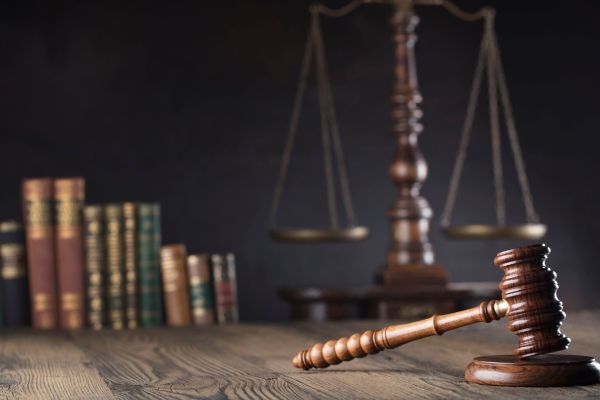The criminal justice system is a keystone of contemporary societies, intended to uphold law and order, protect citizens, and ensure justice. The laws that govern societies must change over time to reflect those civilizations. India’s criminal justice system has been an ongoing debate, with many calling for change. On July 1, 2024, the new criminal laws — the Bharatiya Nyaya Sanhita (BNS),[1] Bharatiya Nagarik Suraksha Sanhita (BNSS),[2] and Bharatiya Sakshya Adhiniyam (BSA),[3] — replaced their aged counterparts the Indian Penal Code (IPC) 1860, Code of Criminal Procedure (CrPC) 1973, and Indian Evidence Act (IEA) 1872, independently.
Discussions on recent criminal law improvements have heated up around the world. While some contend that such changes are a positive step toward a more just and equal society, others worry that they could be negative and undermine the same ideals they want to promote. This blog will examine the implications of the most recent criminal law reforms for justice, equity, and society impact, and determine if they constitute a step forward or backward.
The Need for Reform
India has long-standing criminal laws, many of which date back to the British colonial era. The Indian Penal Code (IPC), introduced in 1860, is obsolescent and frequently ill-equipped to deal with the nuances of modern criminality, such as those committed against women and children, cybercrime, or terrorism. So, in light of these evolving challenges, a legal system that can change to address contemporary issues was required.
The Code of Criminal Procedure (CrPC), established in 1861, similarly prioritized insufficient integration of technology in the criminal justice system. In a time of crucial digital evidence and cyber investigations, the lack of technical emphasis impeded the criminal justice system’s operational efficacy and efficiency. Updating existing processes to use contemporary technologies was not only advantageous but also imperative.
Additionally, the Indian Evidence Act (IEA), established in 1872 does not fully satisfy contemporary evidentiary standards, especially when it comes to accelerating the administration of justice. The outdated provisions of the reform act are one of the main causes of the delays in the Indian legal system, where lengthy police investigations often result in an egregious miscarriage of justice. “Speedy trial is one of the facets of the fundamental right to life and liberty enshrined in Article 21 of the Constitution,” the Supreme Court has acknowledged.[4] Unfortunately, this principle was often inadequately enforced by the aged legal system.
The goal to update legal frameworks and render them more efficacious and pertinent is what motivates the reform movement. The objective is to defend individual rights more effectively, accelerate justice administration, and streamline legal procedures. However, it remains to be seen how well these reforms accomplish these objectives.
Progressive Aspects of the Reforms
The current focus on restoration over punishment in criminal law reforms is one of the most important forward-looking aspects. The criminal justice system has historically placed a strong emphasis on punishment with the goals of deterrence and retaliation. The fact that this strategy has frequently failed to address the fundamental factors driving crime or lower recidivism is becoming increasingly apparent, though. Because of this, a lot of the recent reforms have moved in the direction of a more rehabilitative approach, giving priority to initiatives that help reintegrate offenders into society.
For instance, alternatives to imprisonment including community service,[5] probation, and restorative justice[6] programs have been introduced by reforms in certain jurisdictions. The most effective way to comprehend this shift is to look at community service as a new form of punishment. It allows non-violent offenders, who are often disproportionately affected by harsh sentencing laws, to serve their terms while constructively giving back to their communities. To guarantee that justice can keep pace with modern realities, the legislation is also changing to address challenges such as organized crime,[7] terrorism,[8] corruption, and mob lynchings.[9]
Beneficial developments like Zero FIR,[10] which enables anyone to file a complaint at any police station, and have improved access to justice. The growing use of technologyfor evidence and video recordings in investigations assists in ensuring accurate and trustworthy results. The amendments also support speedier trials through video trials, avoiding delays in justice, and institute a test for sedition, safeguarding free speech while preserving security.
The emphasis on minimizing racial and socioeconomic inequalities within the criminal justice system is another progressive component of the latest reforms.[11] Law enforcement has disproportionately targeted minority communities and low-income persons, punishing them harshly in numerous countries. Measures to remove mandatory minimum sentences, which have been demonstrated to contribute to the disproportionate incarceration of minority communities, are among the reforms intended to redress these inequities. Furthermore, it is believed that enhancing accountability and openness inside law enforcement organizations is a crucial first step in rebuilding public confidence in the legal system.
Concerns About Regressive Outcomes
There are concerns that some of the policies may have regressive effects notwithstanding these reformative elements. The possibility of strict regulations being abused, especially those about national security and terrorism, is one of the main objections. The modifications have widened the concept of terrorism, and law enforcement agencies now have more authority to hold suspects without indictment or due process. Critics argue that such provisions could be used to target activists, minority communities, and political dissidents, violating their human rights.
The new legislation introduces a revised definition of sedition, targeting acts that jeopardize India’s sovereignty, unity, and integrity. It expands the criminalization of speech by including offences like sedition and obscenity, which raises concerns about its implications for freedomof expression.[12] While the reforms aim to curb hate speech, slander, and misinformation to maintain public order, there is a significant risk that these measures could be exploited to suppress legitimate dissent and undermine democratic principles. In a democratic society like India, where freedom of speech is a cornerstone, these stricter regulations could represent a troubling regression.[13]
Despite stringent laws against sexual violence in India, marital rape remains uncriminalized,[14] exposing a critical gap in legal protection. Furthermore, the term “modesty” in the offence of “outraging the modesty of a woman” is outdated and fails to capture the modern understanding of consent and personal autonomy. Updating or removing this term is crucial to ensure legal standards reflect current views on gender equality and individual rights.
The persistence of torture during investigations remains a pressing issue unless evidence legislation concerning recovery based on police statements is reformed. The application of the death penalty for mob lynching is an inadequate response, failing to address the root causes of such violence and unlikely to serve as an effective deterrent or equitable solution. Additionally, recent amendments expanding the death penalty to include crimes such as rape and terrorism have sparked ongoing debate. Critics argue that the focus should be on reforming the criminal justice system to ensure fair trials and prompt justice, rather than relying on the death penalty, which they contend is not a proven deterrent.
Finding the Balance Between Reform and Rights
So, are these reforms a step forward or backward? There is no simple answer. It means finding the correct balance between preserving the essential liberties and rights that form the cornerstone of our democracy and modernizing our legal system to suit those demands. These reforms must include robust protections to prevent misuse to achieve this balance. Some of the provisions in the new laws vest the enforcement agencies with unbridled powers. Now it is incumbent upon the courts to uphold the rule of law and safeguard people’s rights, particularly when new laws are implemented excessively.
To ensure that the reforms are implemented in a way that is aligned with democratic norms, policymakers must engage with a wide range of stakeholders, including legal experts, civil society organizations, and the general public. By incorporating these groups in the reform process, a consensus may be formed and issues can be solved before they turn into serious problems.
Conclusion: A Complicated Path Forward
The recent amendments to India’s criminal laws indicate a challenging destiny. On the one hand, they tackle several long-standing problems, such as the need for modern definitions of crime, enhanced victim protection, and an emphasis on rehabilitation. With these changes, the
legal system may become more adaptable and efficient, better aligned with the demands of contemporary society.
However, the changes encompass provisions that can have detrimental effects on human rights and civil liberties which are cardinal principles enshrined in the Indian Constitution. Several issues require careful consideration, including its impact on free expression, the potential for misuse of strict rules, and the increased authority of law enforcement.
Ultimately, how these reforms are executed and whether they achieve the correct balance between modernizing and safeguarding fundamental rights will determine whether they are viewed as a step forward or a step backward. India must advance these reforms while remaining committed to justice, equity, and respect for individual liberties. Then and only thereafter will these changes be a step toward a more just and egalitarian society.
[1] Bharatiya nyaya sanhita ( 2023). Available at https://www.mha.gov.in/sites/default/files/2024-04/250883_english_01042024.pdf
[2] Bharatiya Nagarik Suraksha Sanhita (2023). Available at https://www.mha.gov.in/sites/default/files/2024-04/250884_2_english_01042024.pdf
[3] Bharatiya Sakshya Adhiniyam (2023). Available at https://www.mha.gov.in/sites/default/files/2024-04/250882_english_01042024_0.pdf
[4] Hussainara Khatoon & Ors v. Home Secretary, State of Bhiar (1979) 3 SCR 532
[5] Bharatiya Nyaya Sanhita, No. 45 of 2023, § 4 cl. (f) (Ind.)
[6] Alok, Restorative Justice: Concept and Scope in India, Legal Service India (2024). Available at https://www.legalserviceindia.com/legal/article-9111-restorative-justice-concept-and-scope-in-india.html
[7] Bharatiya Nyaya Sanhita, No. 45 of 2023, § 111 (Ind.)
[8] Bharatiya Nyaya Sanhita, No. 45 of 2023, § 113 (1) (Ind.)
[9] Bharatiya Nyaya Sanhita, No. 45 of 2023, § 103 (2) (Ind.)
[10] Bharatiya Nagarik Suraksha Sanhita, No. 46 of 2023, § 173 (Ind.)
[11] Bharti Mishra Nath, Analysis: Breaking Down the Proposed Reforms in Indian Criminal Laws, NDTV, (Aug. 12, 2023). Available at https://www.ndtv.com/opinion/analysis-breaking-down-the-proposed-reforms-in-indian-criminal-laws-4292838
[12] Ani, As new criminal laws come into effect, here’s what experts think of their impact on legal system, The Economic Times (July 1, 2024), https://economictimes.indiatimes.com/news/india/as-new-criminal-laws-come-into-effect-heres-what-experts-think-of-their-impact-on-legal system/articleshow/111391882.cms?from=mdr.
[13] Anup Surendranath, New criminal codes from July 1: A threat to citizen liberty, justice under the guise of a decolonisation project, The Indian Express (June 29, 2024), https://indianexpress.com/article/opinion/columns/criminal-codes-threat-citizen-liberty-justice-guise-decolonisation-project-9418768/.
[14] Nalini Sharma, New bills propose stricter laws on rape but marital rape still not an offence, India Today (Aug. 12, 2023), https://www.indiatoday.in/law-today/story/centre-criminal-law-bills-stricter-punishment-rape-marital-rape-not-offence-2419905-2023-08-12.
Author: Aboo Bakr, 2nd Year Law Student at Institution: Jamia Millia Islamia






